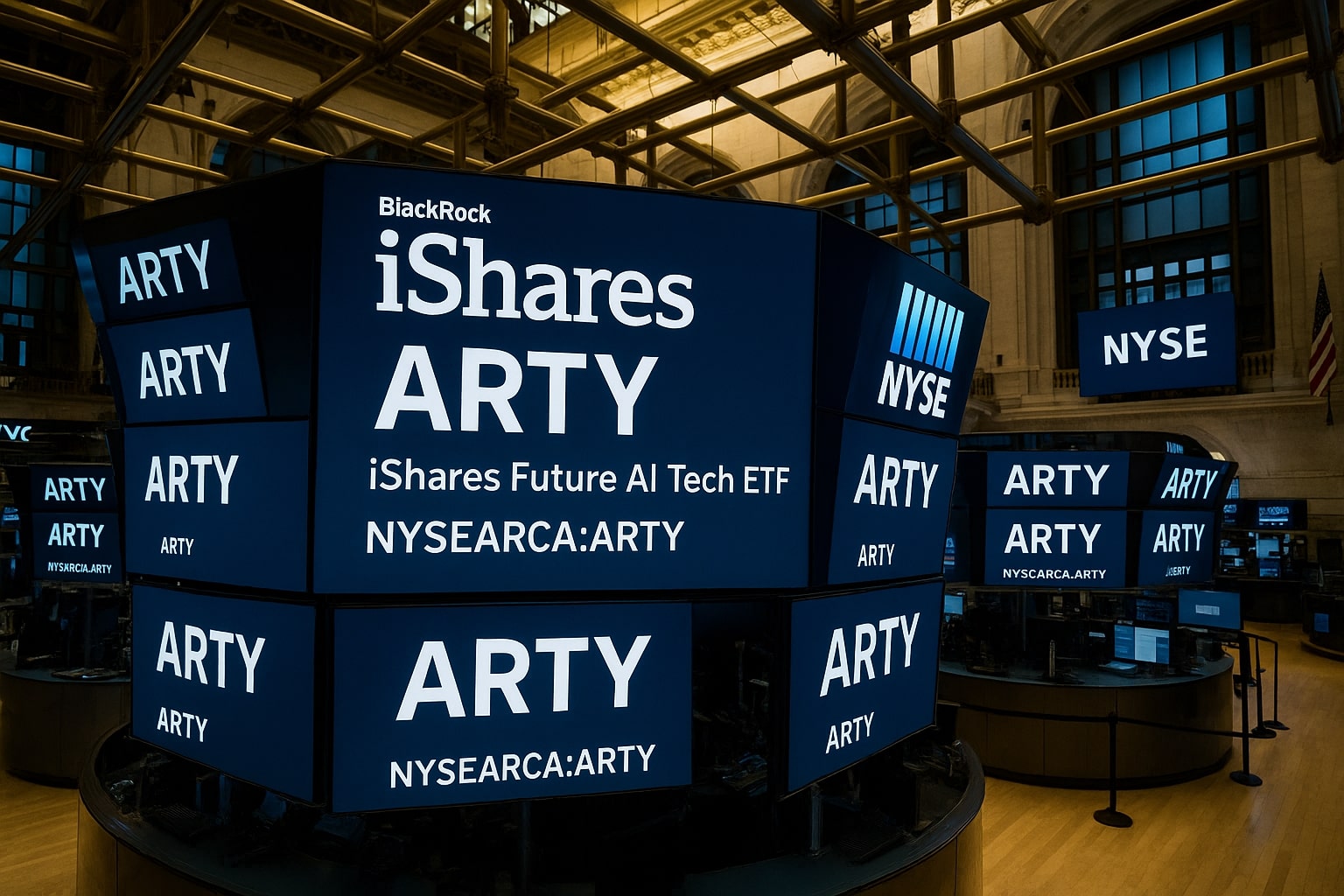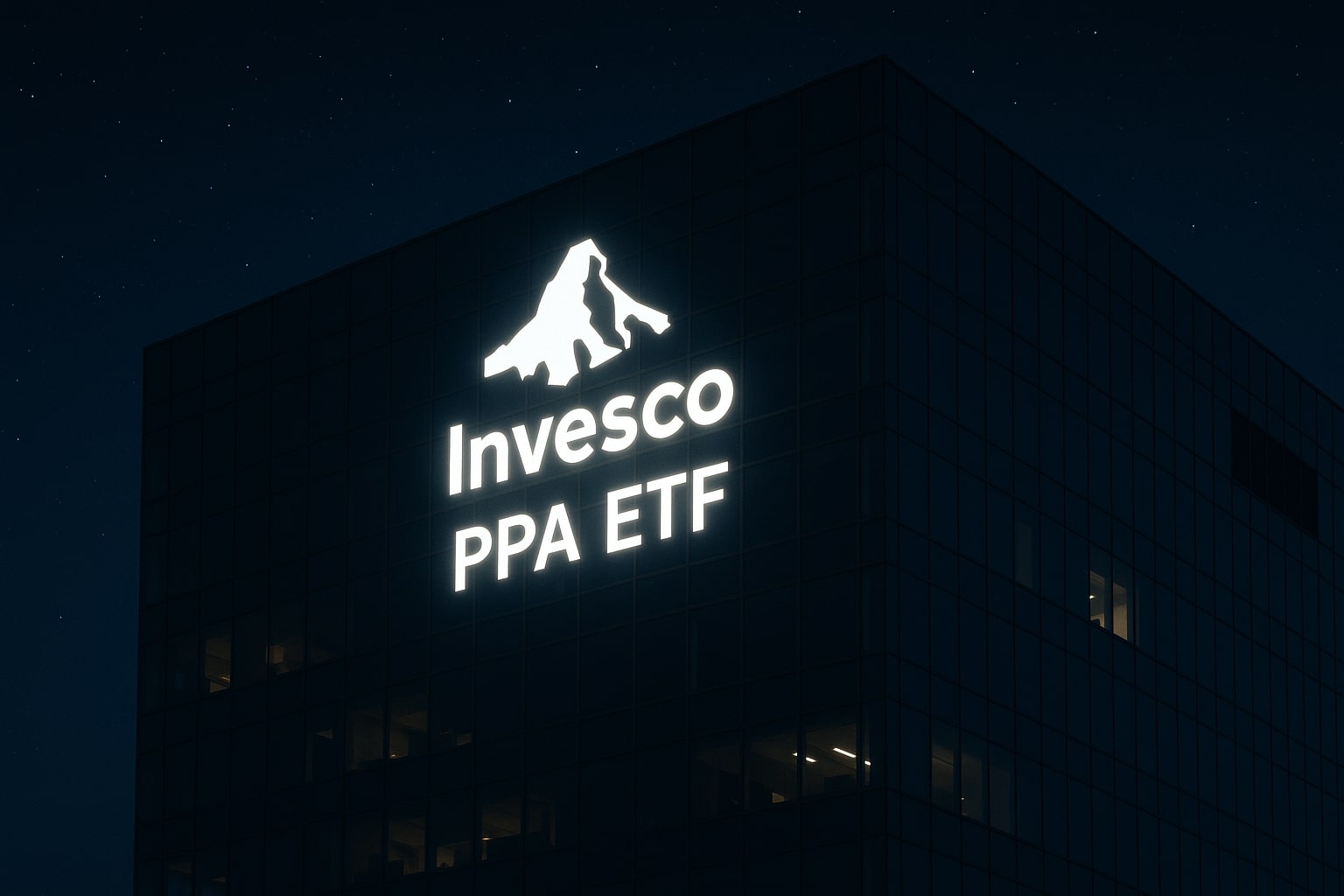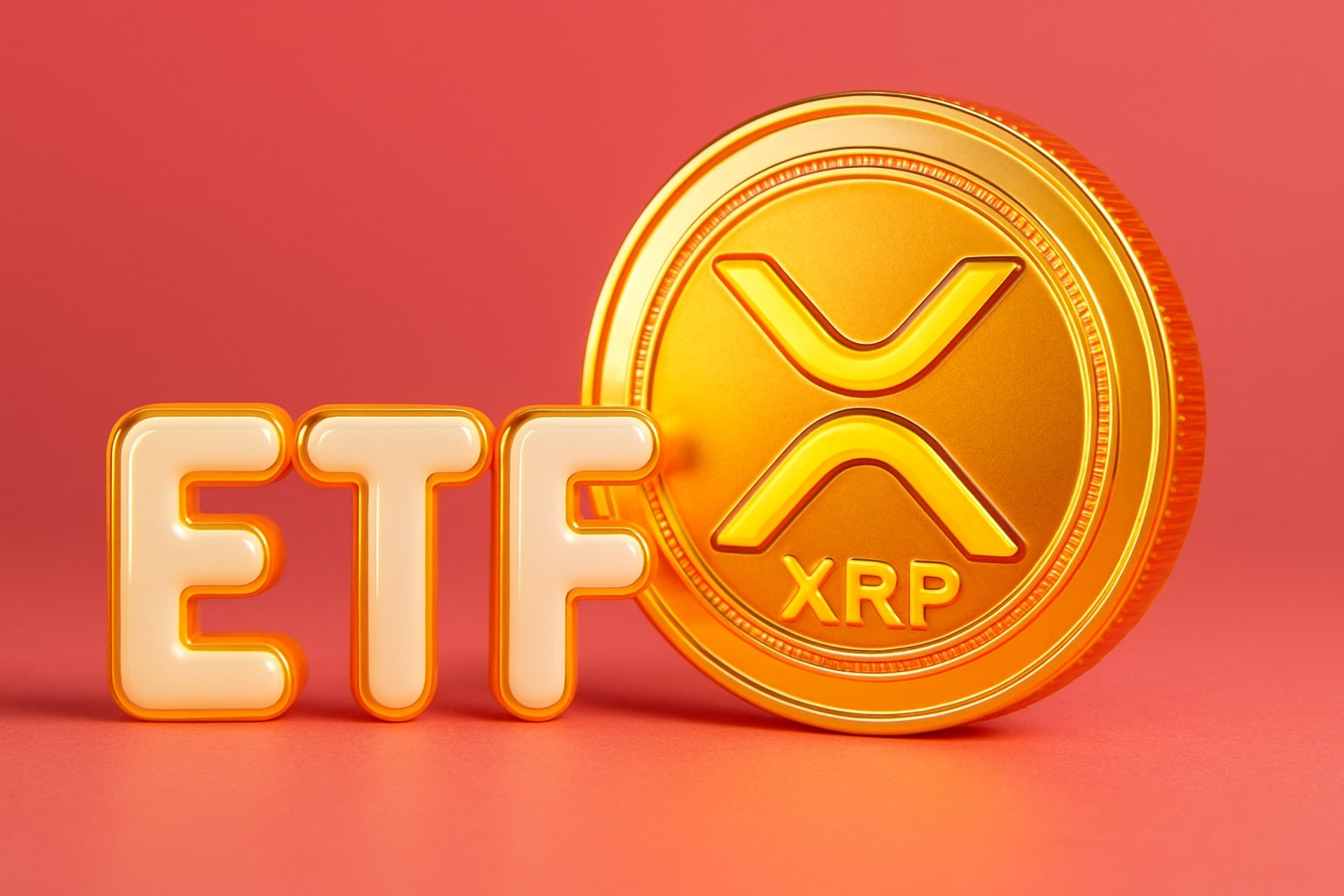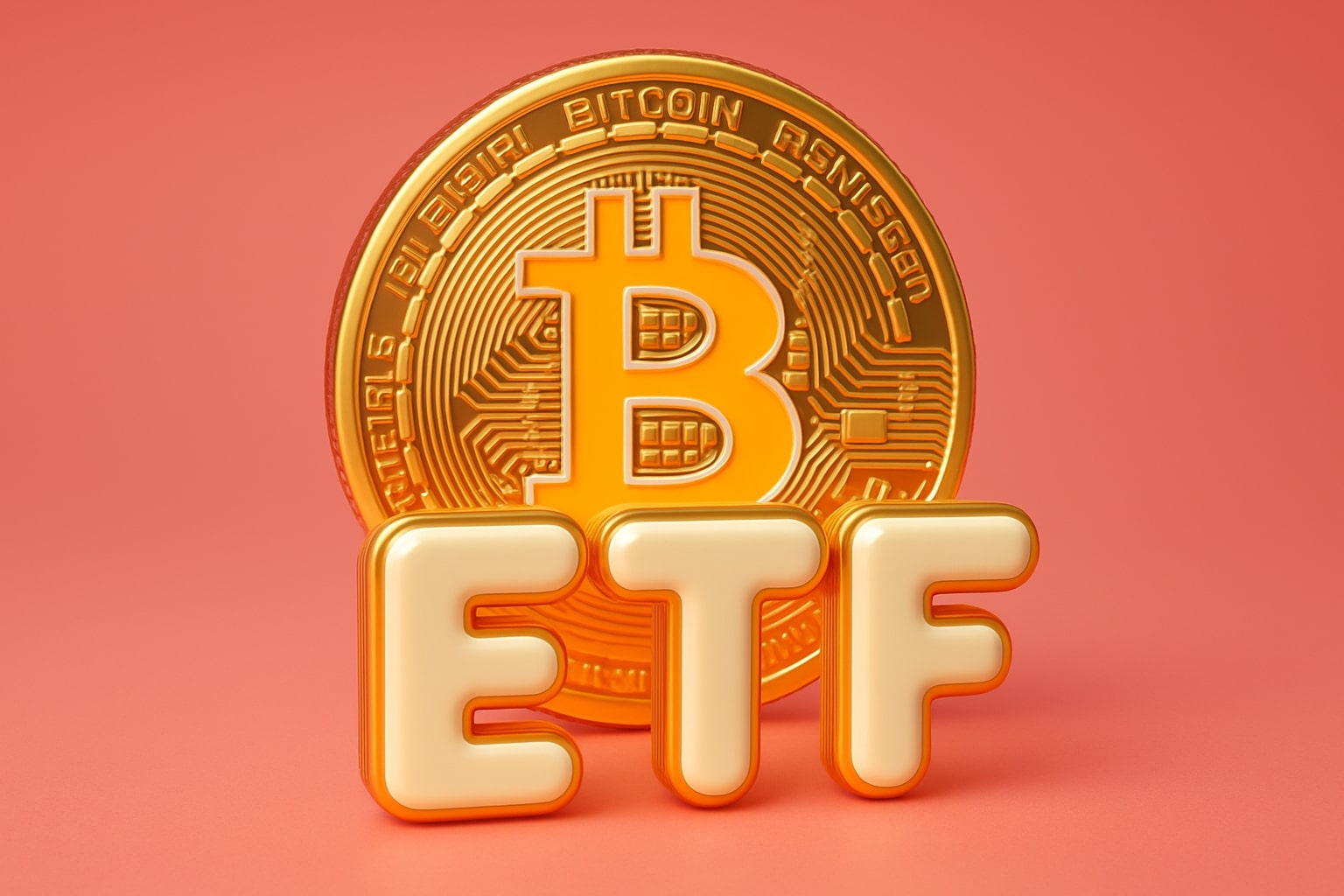NYSEARCA:ARTY ETF Market Standing and Recent Performance
The iShares Future AI & Tech ETF (NYSEARCA:ARTY) real-time chart here closed at $42.68 on August 29, 2025, falling 1.77% on the day before ticking higher after-hours to $43.39. The ETF is up 15.13% year-to-date, outperforming its technology peer group average of +12.86%. Over one year, ARTY delivered +27.67%, well ahead of category returns at +24.38%. On a three-year basis, ARTY achieved +16.48% annualized, highlighting strength but also underscoring how performance can fluctuate during sector rotations. Its concentrated approach to artificial intelligence exposure has allowed it to track AI sector momentum closely, creating significant upside but also heightened volatility.
ARTY’s Holdings and Exposure to AI Leaders
The portfolio of NYSEARCA:ARTY is narrowly focused, with over 83% in technology stocks and the top 10 names representing 44.7% of assets. Advanced Micro Devices (AMD) sits at the top with a 6.05% weighting, up nearly 44% YTD on rising demand for GPUs and custom chips powering hyperscaler AI projects. Super Micro Computer (SMCI), up 89% YTD, contributes 5.58%, reflecting its role as a backbone of AI data center servers. NVIDIA (NVDA) makes up 5.23% with a 31.8% YTD gain, while Broadcom (AVGO) at 4.84% has surged 106.9% YTD on custom ASIC momentum. Palantir (PLTR), soaring 128.9% this year, represents 3.33% of the fund. On average, ARTY’s top 10 holdings have surged 51.6% year-to-date, vastly outperforming QQQ’s +9.9% and SPY’s +7.2%, proving its leverage to AI’s expansion cycle.
Artificial Intelligence Growth Outlook Supporting ARTY
ARTY’s positioning is tied to the projected exponential growth of the AI economy. Generative AI alone is projected to exceed $100 billion by 2030, growing nearly 40% annually, while AI software is expected to reach $1.8 trillion at a 35.9% CAGR. Infrastructure spending is forecasted above $60 billion, growing nearly 30% annually. With ARTY’s holdings spanning semiconductors, software, cloud infrastructure, and end-user applications, the fund captures exposure to the entire AI value chain. AMD’s $10 billion Saudi AI infrastructure deal and NVIDIA’s $500 billion U.S. AI investment plan illustrate the kind of aggressive expansion that reinforces ARTY’s long-term thesis.
Energy and Infrastructure Exposure within the ETF
Unlike traditional tech ETFs, NYSEARCA:ARTY also invests in energy providers to capture the AI-driven surge in electricity demand. Constellation Energy (CEG) represents 3.28% of the portfolio and recently signed Microsoft’s largest ever nuclear energy purchase agreement. This hybrid approach gives ARTY exposure to both AI software and hardware growth, as well as the power infrastructure needed to sustain that growth. With AI data centers projected to dramatically increase grid consumption, ARTY’s inclusion of energy infrastructure players enhances its strategic positioning compared with pure semiconductor funds.
Volatility, Valuation, and Risks for NYSEARCA:ARTY
The ETF’s risk profile is elevated. Since 2018, NYSEARCA:ARTY has traded between $20 and $50, suffering a 50% drawdown during the 2022–2023 correction before rallying again in 2025. The ETF carries a three-year standard deviation of 25.1% and a beta of 1.47, underscoring its volatility. Valuations are stretched across holdings, with Palantir trading at 113x price-to-sales and Arista Networks (ANET) at 20x P/S. These multiples rely heavily on growth momentum. A slowdown in AI adoption or regulatory headwinds could trigger sharp re-ratings. While such risks are inherent in concentrated thematic ETFs, the upside potential in a sustained AI boom remains significant.
Liquidity, Fees, and Global Access
With $1.28 billion in net assets and an average daily volume of 418,000 shares ($9.9 million), ARTY offers sufficient liquidity for both institutional and retail investors. The 0.47% expense ratio is more than double QQQ’s 0.20%, but investors gain access to global holdings such as Advantest Corp (ATEYY), a Japanese semiconductor testing leader not widely accessible in U.S. markets. By packaging such international exposure into one vehicle, ARTY provides retail investors affordable access to otherwise fragmented or costly opportunities.
Comparison with Benchmarks and Long-Term Performance
Over the past year, NYSEARCA:ARTY returned +27.6%, well above the S&P 500’s +16.8% and QQQ’s +21.4%. However, its five-year annualized return of +7.7% trails SPY’s +12.6%, showing that drawdowns can significantly impact longer-term compounding. Dividend yield is negligible at 0.16%, reinforcing ARTY’s status as a pure growth vehicle. Momentum metrics show ARTY with an A+ grade on 1M, 6M, and 1Y horizons, though on 5Y timeframes it receives a weaker C rating, reflecting the sector’s cyclical nature. This dynamic demonstrates that ARTY is best deployed tactically or as a small “satellite” allocation rather than a core holding.
Final Assessment on ARTY ETF
The iShares Future AI & Tech ETF (NYSEARCA:ARTY) real-time chart here is a Buy for aggressive, high-conviction investors seeking concentrated exposure to artificial intelligence. Its top holdings across AMD, SMCI, NVIDIA, Palantir, and Broadcom give direct leverage to AI infrastructure, software, and energy growth. Risks include stretched valuations, high volatility, and sector concentration, but projected 30–40% AI market CAGR through 2030 provides strong justification for upside. For investors with risk tolerance and long-term horizons, ARTY offers one of the clearest thematic vehicles to capture the AI revolution.



















